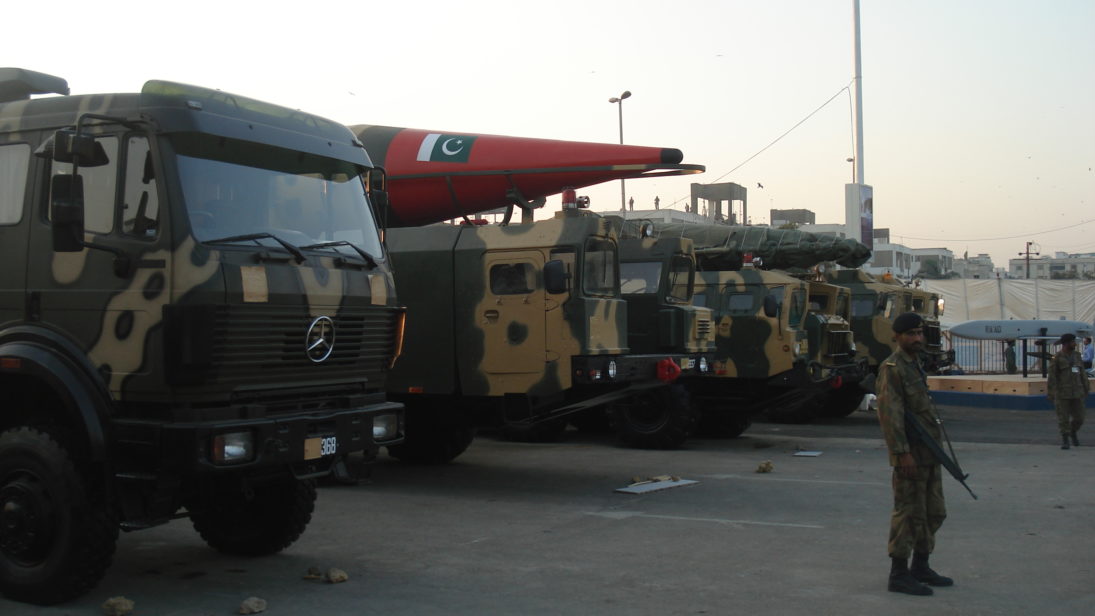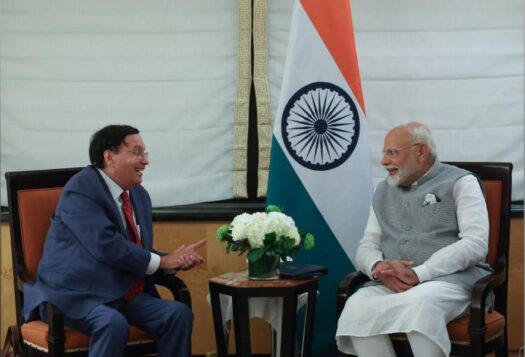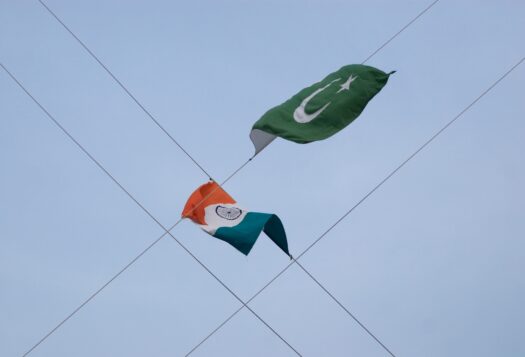
Nuclear Pakistan continues to engender a great deal of academic interest. As scholars explore the evolution of Pakistan’s nuclear doctrine, they are adding to the rich academic literature regarding the country’s process towards becoming a nuclear power. To this end, expert Hassan Abbas’ new book entitled Pakistan’s Nuclear Bomb: A Story of Defiance, Deterrence and Deviance was released earlier this year. In this evidence-rich work, Abbas provides a historical assessment of Pakistan’s nuclearization, its efforts to enhance the credibility of its nuclear program, and the role of the infamous A.Q. Khan in bringing this about.
Abbas’ research seeks to answer questions surrounding Pakistan’s underlying incentives for a nuclear program and its proliferation activities since the inception of its nuclear program. Throughout the story of Pakistan’s nuclear history, one theme stands out: Islamabad’s perceived insecurity. The goal of achieving security through nuclear deterrence lies at the heart of Pakistan’s nuclearization, explains its proliferation linkages to an extent, and continues to determine the future of “nuclear Pakistan.”
Pakistan’s Nuclear Program: Incentives and the Men Who Mattered
Abbas, like many others, is right in his assessment that the persistent threat emanating from India’s conventional and nuclear military capabilities pushed Pakistan to follow suit. However, Abbas uses a neorealist lens to delve into the threat perception that led Pakistan to pursue the nuclear option. He pinpoints the 1971 India-Pakistan war as the key turning point: in December 1971, East Pakistani secessionist demands led to a harsh military response countered by India, ultimately resulting in the liberation and creation of Bangladesh. The regional balance had shifted in favor of India, with a widening gap between conventional forces highlighted in the short length of the conflict–14 days.
Abbas characterizes A.Q. Khan as a catalyst for Pakistan’s nuclear weapons program, but not the reason for it, which was decidedly security-driven.
While Abbas’ consideration of the Indian threat upholds preexisting literature on this topic, what sets this book apart from other works on Pakistan’s nuclear program is its deep dive into the A.Q. Khan Network: a large portion of Abbas’ work examines the contributions of Abdul Qadeer Khan, “father of Pakistan’s nuclear bomb,” as well as the fissures between the Khan Research Laboratories (KRL) and the Pakistan Atomic Energy Commission (PAEC). Abbas navigates the reader through Khan’s ambitions and the KRL’s activities, beginning with the KRL having enriched a small amount of uranium by 1978. Abbas succinctly analyzes the reasons for Khan’s meteoric rise into someone who could deliver on the nuclear promise, since Khan had the power to take whatever action he required with a hefty budget at his disposal and a no-questions-asked approach from the government. While Khan’s free reign was a key reason behind the pace at which Pakistan’s nuclear weapons program developed, this is not to say that Pakistan’s perceived insecurity was unimportant in Abbas’ assessment of Pakistan’s nascent nuclear weapons program. Indeed, Abbas characterizes A.Q. Khan as a catalyst for Pakistan’s nuclear weapons program, but not the reason for it, which was decidedly security-driven.

Islamabad’s Proliferation Linkages
While exploring Khan’s role within Pakistan’s nuclear program, Abbas dedicates a chapter each to Pakistan’s nuclear proliferation links with Iran, North Korea, and Libya. In Abbas’ historical account of these linkages, A.Q. Khan is a central figure and often a rogue actor, at times proliferating nuclear weapons technologies likely without the expressed permission of Pakistan’s government. With Iran, Abbas describes a combination of security fears, a perceived Western betrayal, A.Q. Khan’s growing repute in centrifuge-manufacturing, and the overarching role of the military establishment as the driving forces behind Pakistan’s nuclear cooperation with Iran. Abbas provides compelling evidence outlining A.Q. Khan’s responsibility for proliferating nuclear information technology to his “brotherly” Muslim country, using old interviews of Khan where he perceived an importance for Iran to be given nuclear technology. Abbas writes: “Regardless of whether Khan had official authorization for his contacts with Iran between 1993 and 2000, it is unlikely that any political leader in Pakistan sanctioned the transfer of nuclear-related technology and expertise.” The same is the case for Libya, a deal that Abbas argues is difficult to explain but demonstrates “the A.Q. Khan network’s global reach, its sheer audacity and defiance of the international order” as well as Islamabad’s failure to monitor Khan’s activities.
In Abbas’ historical account of these linkages, A.Q. Khan is a central figure and often a rogue actor, at times proliferating nuclear weapons technologies likely without the express permission of Pakistan’s government.
In Abbas’ discussion of the North Korean case, however, he implicates Pakistan’s army for supervising the shipment of centrifuges to the DPRK government, implying the upper levels of the military may have known of Khan’s outreach. Unlike with Libya and Iran, however, there are clear benefits that would account for the Pakistani military’s alleged involvement in proliferation. Abbas attributes Pakistan’s poor relations with the United States, its pursuit of a reliable missile-based delivery system, and North Korea’s offer to provide Pakistan with long-range missile expertise as motivating factors behind Islamabad’s nuclear proliferation linkages to North Korea. Intriguingly, it seems Pakistan’s quest for security seems to have motivated its proliferation ties to the DPRK.
These instances each bring the mind the conditions under which Pakistan itself sought the bomb: a battered state, defeated by a strategic adversary, perceived of the need for a nuclear option to secure its interests. A reader cannot help but draw the comparison between the 1971 Indo-Pak War and the 1980 Iran-Iraq War in how the defeated country was compelled to develop a nuclear weapons program as a result of their devastating loss. In the case of the DPRK, too, Pyongyang and Islamabad were in the same boat, with North Korea afflicted by paranoia over the United States and insecurity over the bitter memories of the Korean War. Abbas draws parallels between Pakistan and North Korea’s struggles in looking to develop a credible nuclear infrastructure while being impeded by U.S. sanctions. However, the reader is left to wonder the extent to which these considerations drove the actions undertaken by the A.Q. Khan network or the Pakistan military.
Beyond Pakistan’s Nuclear History
While Abbas mentions ongoing shifts in Pakistan’s nuclear doctrine only briefly, his analysis of Pakistan’s initial nuclearization provides insight into the future direction of the country’s nuclear program. He rightly asserts that matching New Delhi’s nuclear capabilities is a priority for Islamabad, suggesting Pakistan reacts when India acts. This action-reaction model is followed to date, as both countries are now introducing Multiple Independent Re-entry Vehicle (MIRV) technology into their nuclear delivery systems. This suggests that Islamabad will continue to enhance its deterrence mix vis-à-vis India, tailoring its doctrine and posture in line with nuclear progress in India.
As sweeping global initiatives aim to achieve lofty nuclear weapons prohibition goals without addressing the initial causes of nuclearization, Abbas’ analysis of the forces behind Pakistan’s case provides an important framework for the global nonproliferation regime.
However, Abbas’ assertion that lack of civilian oversight over the military and political instability increase the chances of proliferation is sharply in contrast to the steps taken by the Pakistan military in leveraging the role of the Strategic Plans Division (SPD)and the National Command Authority (NCA) to improve the safety and security of its nuclear weapons. Founded in 2000, the NCA is the central civilian-led command overseeing Pakistan’s nuclear arsenal. SPD, on the other hand, oversees Pakistan’s strategic institutions, such as PAEC and the KRL. Its security arm is the Strategic Plans Division Force, an active duty military branch tasked with the protection of Pakistan’s nuclear and strategic arsenals.
Moreover, Abbas’ focus on the civil-military imbalance is rather incongruous with his security-driven argument, given that the military has undertaken the protection of civilian institutions in the strategic fora and that Pakistan’s horizontal proliferation materialized under military leadership. General Musharraf was president during A.Q. Khan’s most rampant proliferation years, although it would be under his tenure that Khan’s Network would finally be cut off. Further, Prime Minister Zulfikar Ali Bhutto was Pakistan’s most prominent civilian nuclear advocate, and there is little evidence to suggest that civilian control would have resulted in a different approach—if anything, Bhutto’s penchant for Muslim unity and defiance of the West indicate that he may have supported helping his fellow Muslim country, Iran, if the need had arisen during his time.
Understanding Nuclear Pakistan
Abbas’ scholarly contribution comes at a time when Pakistan’s nuclear status is widely critiqued regarding its doctrinal changes, the safety and security of its weapons, and its responsibility as a nuclear power. This book coherently explains that a credible and safe nuclear capability was and will remain paramount for Pakistan’s security. As sweeping global initiatives aim to achieve lofty nuclear weapons prohibition goals without addressing the initial causes of nuclearization, Abbas’ analysis of the forces behind Pakistan’s case provides an important framework for the global nonproliferation regime. Such a framework not only helps the world understand “nuclear Pakistan” and its security-specific goals, but also proves useful in grappling with Pakistan’s dealings with other aspiring nuclear states.
Editor’s Note: In an ongoing series aimed at bridging the divide between policy analysis and academic scholarship, SAV contributors review recent articles and books published by leading scholars to evaluate the latest theoretical and analytical debates on strategic issues and their implications for South Asia. Read the series here.
***
Click here to read this article in Urdu.
Image 1: Syednavqi90 via Wikimedia Commons
Image 2: Aamir Qureshi via Getty


